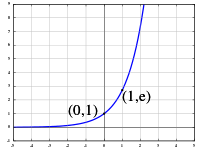
Photo from wikipedia
$${\mathbb {Z}}_2{\mathbb {Z}}_{4}$$ -additive codes have been defined as a subgroup of $${\mathbb {Z}}_2^{r}\times {\mathbb {Z}}_4^{s}$$ in [6] where $${\mathbb {Z}}_2$$ , $${\mathbb {Z}}_{4}$$ are the rings of integers modulo… Click to show full abstract
$${\mathbb {Z}}_2{\mathbb {Z}}_{4}$$ -additive codes have been defined as a subgroup of $${\mathbb {Z}}_2^{r}\times {\mathbb {Z}}_4^{s}$$ in [6] where $${\mathbb {Z}}_2$$ , $${\mathbb {Z}}_{4}$$ are the rings of integers modulo 2 and 4 respectively and r and s are positive integers. In this study, we define a family of codes over the set $${\mathbb {Z}}_2[{\bar{\xi }}]^{r}\times {\mathbb {Z}}_4[\xi ]^{s}$$ where $$\xi $$ is a root of a monic basic primitive polynomial in $${\mathbb {Z}}_{4}[x]$$ . We give the standard form of the generator and parity-check matrices of codes over $${\mathbb {Z}}_2[{\bar{\xi }}]^{r}\times {\mathbb {Z}}_4[\xi ]^{s}$$ and also we introduce skew cyclic codes and their spanning sets. Moreover, we study the Gray images of codes over both $${{\mathbb {Z}}}_4[\xi ]$$ and $${{\mathbb {Z}}_{2}[{\bar{\xi }}]^r\times {{\mathbb {Z}}_{4}[\xi ]^s}}$$ with respect to homogeneous weight and give the necessary and sufficient condition for their Gray images to be a linear code. We further present some examples of optimal codes which are actually Gray images of skew cyclic codes.
Journal Title: Journal of Applied Mathematics and Computing
Year Published: 2021
Link to full text (if available)
Share on Social Media: Sign Up to like & get
recommendations!